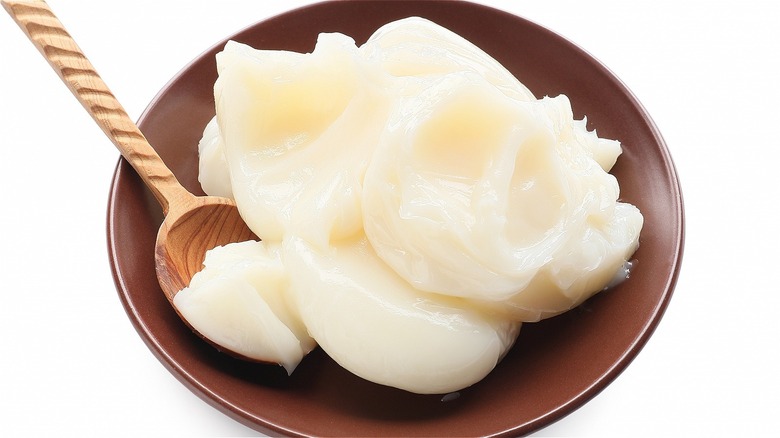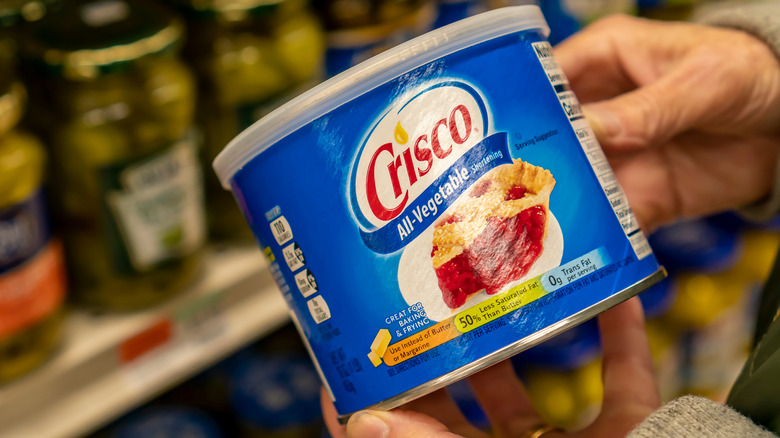The Case For Making Cookies With Shortening, Not Butter
At its simplest, cookies are made with flour, butter, and sugar. While many people opt for unsalted butter to make a fresh batch of cookies, there are plenty of reasons to use shortening instead. Shortening is a 100% fat baking ingredient made either from animal fat or solidified vegetable oil. Although it's often framed as a highly unhealthy ingredient, when consumed in moderation, shortening can take your cookies to new heights.
For starters, shortening has a higher melting point than butter, which means that cookies made with shortening tend to spread less during baking. This can yield a batch of cookies that are taller and have a softer, more tender texture. Unlike butter, which contains water, shortening is a solid fat that can help prevent a too-crisp cookie. If you want an ultra-soft cookie, shortening works wonders.
Butter has a distinct flavor, while shortening is relatively neutral in taste. If you prefer cookies with a milder flavor or want the other ingredients in your cookie recipe to shine, shortening is a great option. Shortening also has a longer shelf-life than butter, which helps prevent unnecessary food waste if you're not a frequent cookie baker.
Plus, if you're using vegetable oil-based shortening instead of one made from animal fat, it's actually vegan-friendly.
Shortening's bad reputation
Although there are a number of reasons to use shortening instead of butter when baking cookies, it doesn't have the healthiest reputation. Shortening used to be made with partially hydrogenated oil — a trans fat. Trans fats are proven to raise levels of bad cholesterol, leading to a higher risk of heart disease, stroke, and type two diabetes — per the American Heart Association. However, trans fats are now illegal in the U.S. and shortening is no exception. Today, shortening is made with fully hydrogenated oil, which means it has no trans fats.
Although it is generally higher in calories and fat, and lower in calcium than butter, shortening is okay to consume in moderation — especially if you need a soft, evenly-textured batch of cookies. If you have health concerns related to using shortening in your next batch of cookies, try using 1 part butter and 1 part shortening, just like Martha Stewart does for her giant chocolate sugar cookies.
Next time you need a soft, tall batch of cookies, try experimenting with shortening instead of butter. Happy baking!

